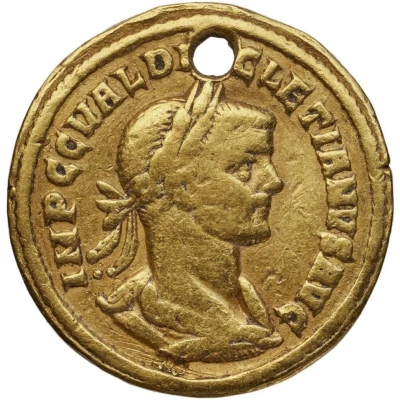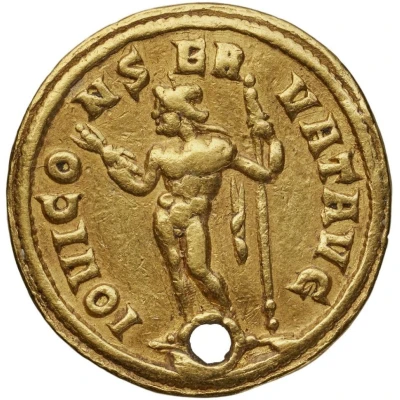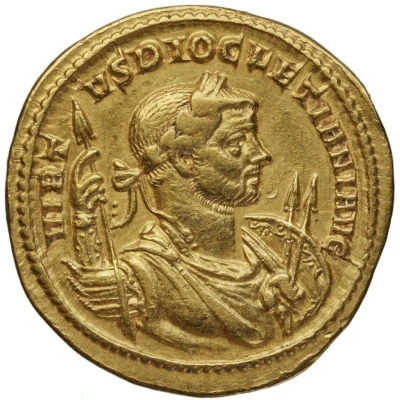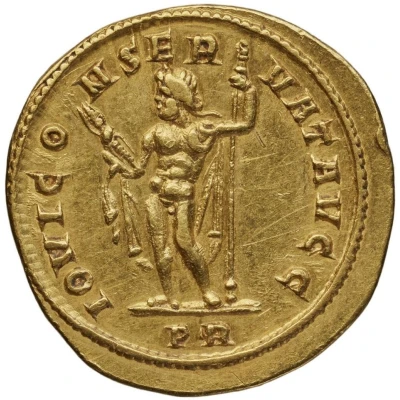
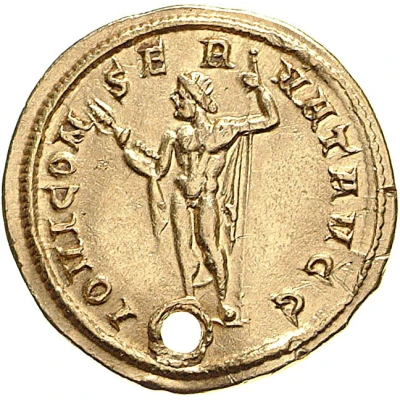

© Münzkabinett - Staatliche Museen zu Berlin (CC BY-SA 4.0)
Aureus - Diocletian IOVI CONSERVAT AVGG; Jupiter
| Gold | 4.7 g | 20 mm |
| Issuer | Rome › Roman Empire (27 BC - 395 AD) |
|---|---|
| Emperor | Maximian Herculius (Marcus Aurelius Valerius Maximianus) (286-305) |
| Type | Standard circulation coin |
| Years | 284-294 |
| Value | Aureus (25⁄2) |
| Currency | Antoninianus, Reform of Caracalla (AD 215 – 301) |
| Composition | Gold |
| Weight | 4.7 g |
| Diameter | 20 mm |
| Shape | Round (irregular) |
| Technique | Hammered |
| Orientation | Variable alignment ↺ |
| Demonetized | Yes |
| Updated | 2024-10-05 |
| Numista | N#305809 |
|---|---|
| Rarity index | 100% |
Reverse
Jupiter, standing left, holding thunderbolt in right hand and sceptre in left hand.
Script: Latin
Lettering: IOVI CONSERVAT AVGG
Unabridged legend: Iovi Conservatori Duorum Augustorum.
Translation: To Jupiter, protector of the two emperors (Augusti).
Comment
Source:Online Coins of the Roman Empire (OCRE)
Interesting fact
One interesting fact about the Aureus - Diocletian (IOVI CONSERVAT AVGG; Jupiter) coin is that it was issued during a time of significant economic and political change in the Roman Empire. The coin was minted during the reign of Diocletian, who introduced a number of economic reforms in an attempt to stabilize the empire's economy and address issues such as inflation and debasement of the currency. The coin's design, featuring Jupiter on one side and the emperor's image on the other, reflects the importance of the Roman gods and the emperor's divine status in Roman society. Additionally, the fact that the coin was made of gold, a valuable and durable metal, highlights the wealth and power of the Roman Empire at the time.
